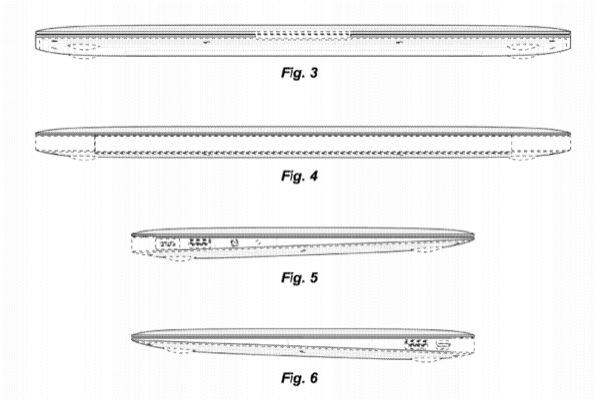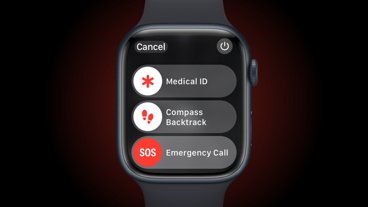The U.S. Patent and Trademark Office issued Apple Design Patent No. D661,296 (via The Verge)which covers the asymmetrical wedge-like or so-called "teardrop" shape first introduced in the company's MacBook Air line of computers.
While the patent itself is nearly devoid of details, usual for a design patent, the schematic illustrations give an exhaustive look at how the MacBook Air's body differs from existing thin-and-light PCs. The lack of text could indeed give the patent more power as it does not limit the scope to which Apple defines the laptop's design.
The patent could be important if Apple decides to pursue legal action against lookalike laptops scheduled to roll out later this year. Some upcoming products from the Intel-backed "Ultrabook" initiative bears a striking resemblance to the MacBook Air, and if Apple follows with tradition these Windows-based laptops could face infringement suits.
Intel claims that ultrabooks not only offer better performance than the iPad but represent a better value than current laptop offerings from Apple, a comment directed at the Mac-maker's thin-and-light. Price points are in contention, however, as component costs associated with Intel's specifications have brought many ultrabook products near or above the cost of a MacBook Air.
Illustration from Apple's MacBook Air design patent. | Source: USPTO
Apple hasn't yet expressed any interest in taking ultrabook makers to court, however that may change as the products begin to hit shelves. Currently, HP's Envy Spectre XT and Asus' Zenbook UX31 are the front-running ultrabooks and both take visual cues from the MacBook Air.
 Mikey Campbell
Mikey Campbell








 Malcolm Owen
Malcolm Owen

 Mike Wuerthele
Mike Wuerthele
 Christine McKee
Christine McKee
 Charles Martin
Charles Martin

 Marko Zivkovic
Marko Zivkovic



-m.jpg)






84 Comments
Gentlemen, start your engines!
And hold onto your hats... It's gonna be one hell of a ride!
"But these are the natural evolution of what a light notebook computer looks like. We can't possibly make it look like anything else because this is natural progression, so these patents are frivolous at best. It's like patenting the design for a circle," says yet another lawyer representing yet another taker of design cues from Apple.
I'm going to go out on a limb here and say that I don't see this affecting anything at all. Certainly there is prior art for thin wedge shaped laptops. Certainly minor changes from this shape would be acceptable.
I saw lots of people churning out the Sony laptop from 2004 as prior art but seeing at that is as fat at both ends it's nothing like the MacBook air. I would like to see this challenged in court and for Apple to win. The MacBook air benefits from the unibody design which Apple obviously spent a whack of dough on developing and why shouldn't they get paid from the copycats.
Yeah right, cause patents have done such a good job at stopping the rest of the industry from ripping Apple off. I'm sure those Ultrabook makers are shaking in their boots.